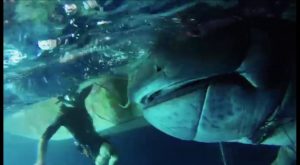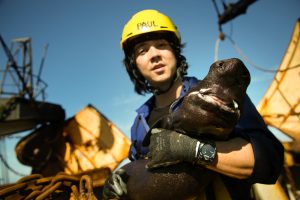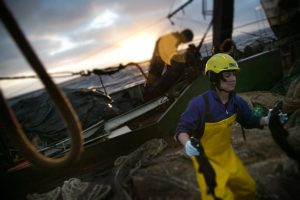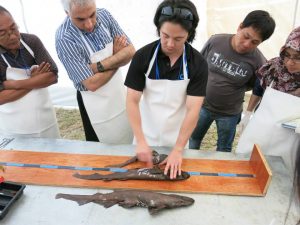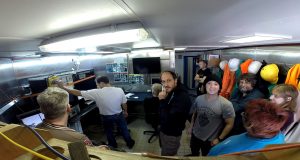Aspects of The Life History And Taxonomy Of Deep-Sea Chondrichthyans in the Southwestern Indian Ocean
A Thesis Defense by Paul Clerkin
Monday, October 30th at 4pm
MLML Seminar Room
Paul Clerkin graduated cum laude from Cornell University in the winter of 2010 with a double major in Science of Natural and Environmental Systems and Natural Resources. He also received associate degrees from Sacramento City College with President’s Highest Honors in Biology, Chemistry, Physical Science, Sociology, and Humanities. His research experience includes storm tracking with the Coastal Processes Division of NOAA, an NSF REU internship at Rutgers University Marine Field Station, research assistantships in chemistry (at American River college) and Ichthyology (at Cornell's Museum of Vertebrates), and a research voyage aboard a tall ship during SEA's semester at sea.
After completing his undergraduate degree, he served several deployments as a shipboard Certified Fisheries Observer with the National Marine Fisheries Service in the Bering Sea out of Dutch Harbor, Alaska. In 2011, he began his studies at MLML’s Pacific Shark Research Center under his adviser, Dr. David Ebert. He has worked with Dr. Ebert to instruct chondrichthyans workshops on the island nations of Mauritius and the Seychelles for the Food and Agriculture Organization of the United Nations. He also participated in a cruise in the Southern East Atlantic as a shark expert for FAO/UN.
Thesis Abstract:
During the last quarter of a century, the conservation and management of chondrichthyans (collectively, sharks, rays, and chimaeras) has received considerable focus. This is especially true for deep-sea chondrichthyans. As technologically advanced fisheries expand into deeper waters of the high seas, new chondrichthyan species are being discovered and described at an increasing rate. The objectives of this study were to investigate the deep-sea chondricthyan fauna in a remote region of the Southwestern Indian Ocean Offshore and provide descriptions of three species of Chimaeridae previously unknown to science, and collect and analyze biological parameters relating to the life histories of all shark species encountered. Specimens were collected as bycatch in deep-sea fisheries from 46 sites along deepwater seamounts of the Southwest Indian Ocean Ridge and the Madagascar Ridge. Among the species encountered were three relatively large chimaeroids, which upon closer examination, were determined to be distinct from all other known members of the family. A description these three new species is presented. A total of 4009 specimens were examined and sex ratios, size range, smallest mature, largest immature, and length at 50% maturity (LT50) calculated. Detailed information is presented on the reproductive biology, life history, and distribution of 31 species representing 14 genera.


